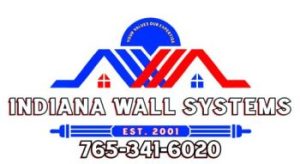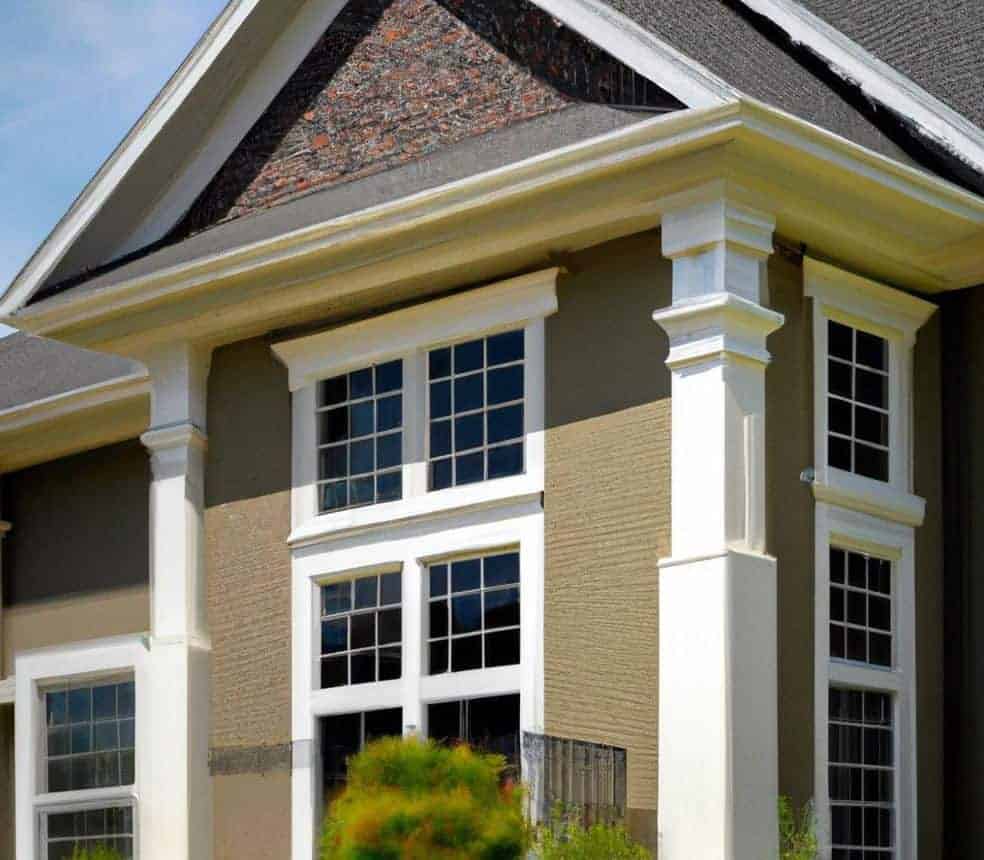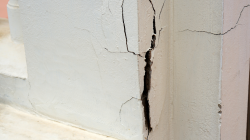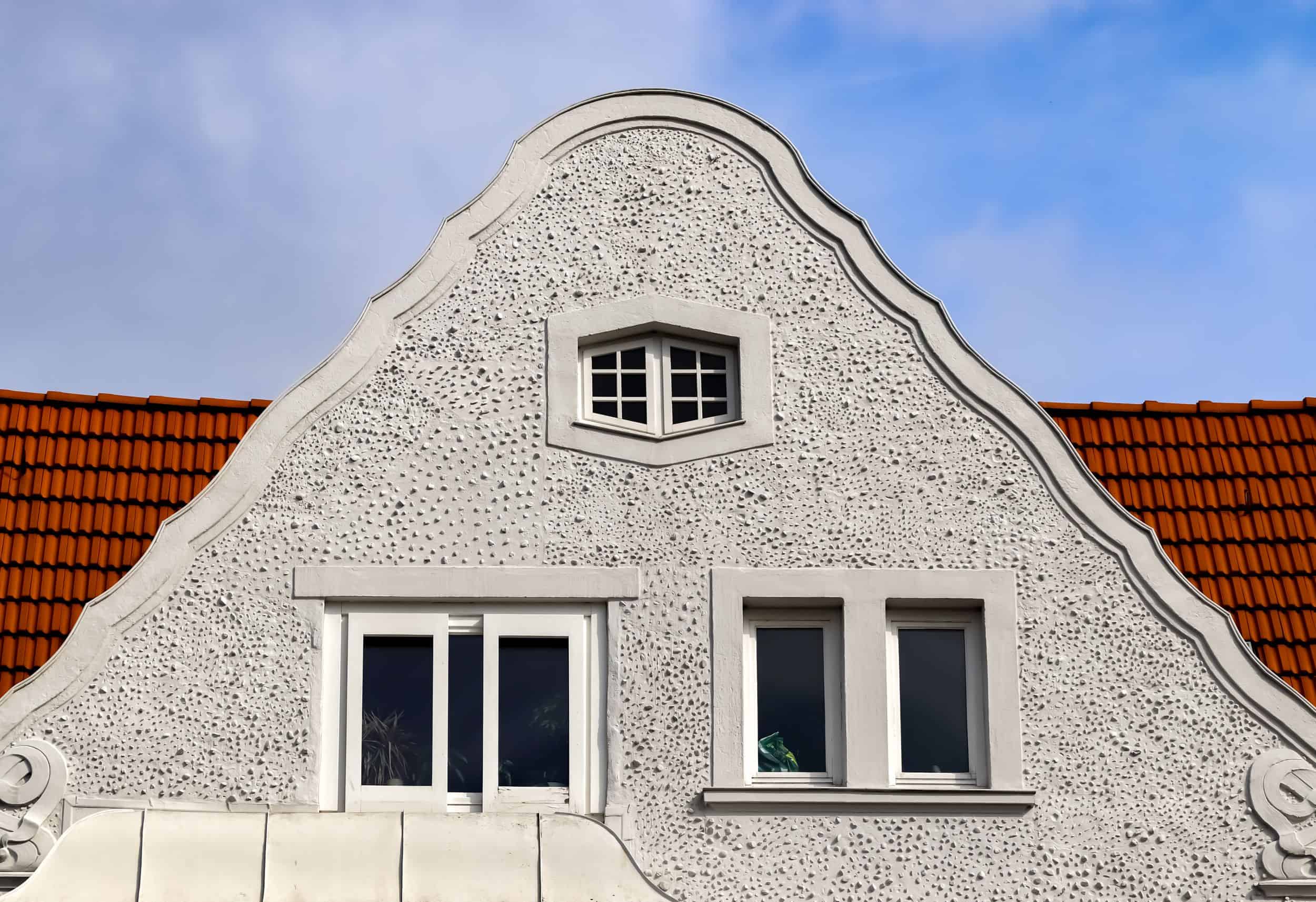Protect Your Home’s Exterior With Expert Tips on Cleaning and Maintenance—Plus Common Do’s and Don’ts Every Homeowner Should Know
Ever noticed your EIFS stucco looking a bit dull lately? You’re not alone. After 22 years in the business, I’ve seen countless homeowners struggle with keeping their exterior insulation and finish system looking its best. The good news? With the right approach, maintaining your EIFS doesn’t have to be a headache.
Here’s the thing – EIFS maintenance isn’t just about keeping up appearances. It’s about protecting your investment and avoiding costly repairs down the road. I’m Jeff Johnson, CEO of Indiana Wall Systems, and I’ve worked on everything from 300,000 square foot commercial projects to small residential repairs across Indiana, Kentucky, and Ohio.
Today, I’m sharing the exact methods we use to clean and maintain EIFS properly. No fancy equipment needed, no expensive contractors required (unless you want one!). Just proven techniques that actually work.
Key Takeaways
- Proper cleaning techniques can extend your EIFS lifespan by 10-15 years
- Always use the soft wash method – high pressure is your enemy
- Regular inspections catch small problems before they become wallet-drainers
- The right cleaning solution makes all the difference
- Seasonal maintenance is easier than emergency repairs
Understanding Your EIFS System
Let’s start with the basics. Your EIFS wall system isn’t just fancy stucco – it’s a sophisticated exterior wall cladding system that combines insulation with a protective finish. Think of it like a high-tech jacket for your house.
The synthetic stucco surface might look tough, but it needs gentle care. Unlike traditional stucco, EIFS has multiple layers working together:
- Base coat with embedded mesh
- Exterior insulation board
- Water-resistant barrier
- Finish coat with texture
EIFS System Layers Breakdown
Finish Coat
Acrylic finish with color and texture – protects from weather
Base Coat
Reinforced with mesh for strength and crack resistance
Insulation Board
EPS foam provides thermal efficiency and energy savings
Water-Resistant Barrier
Protects substrate from moisture infiltration
Each layer plays a crucial role in protecting your home. When you clean EIFS properly, you’re preserving all these layers, not just making the surface pretty. This building envelope care approach ensures your system maintains its thermal efficiency for decades.
Why EIFS Requires Special Care
Your EIFS stucco finish is actually quite delicate. The acrylic finish that gives it color and texture can be damaged by harsh chemicals or excessive pressure. I’ve seen too many homeowners accidentally damage the stucco finish trying to blast away dirt.
The porous nature of the finish coat means it can trap moisture if not cleaned correctly. That’s why understanding proper cleaning methods is so important. Get it wrong, and you’re inviting water damage, mold growth, and expensive repairs. Following ASTM standards for EIFS maintenance helps ensure you’re using approved methods.
Essential Cleaning Supplies and Tools
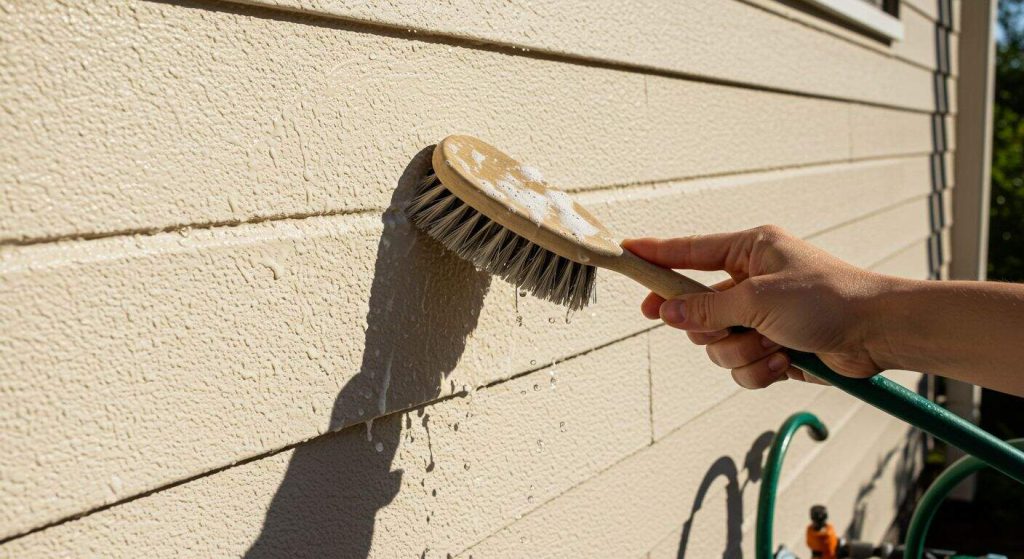
Before you start cleaning stucco, let’s gather the right tools. You don’t need anything fancy – most of these items are probably in your garage already.
Must-Have Cleaning Tools
Soft-bristle brush – This is your best friend for EIFS cleaning. Look for brushes with nylon bristles that won’t scratch the surface. I recommend having both a long-handled brush for walls and a smaller one for detail work.
Garden hose with adjustable nozzle – Skip the pressure washer for now. A regular hose provides plenty of water pressure for most cleaning jobs. If you must use a pressure washer, keep it under 300 PSI and stay at least 24 inches from the surface.
Buckets and sponges – Get at least two 5-gallon buckets: one for your cleaning solution and one for clean water to rinse your tools. Natural sponges work better than synthetic ones for gentle scrubbing.
Recommended Cleaning Solutions
The right EIFS cleaner makes a huge difference. Here’s what works:
Mild detergent mixed with water – Dawn dish soap or similar works great. Mix about 1/4 cup per gallon of warm water. This handles most dirt and debris without damaging the finish.
Specialized EIFS cleaners – Products like Dryvit systems Demandit or Sto Corp products Restauro work well for tougher stains. They’re formulated specifically for synthetic stucco surfaces and meet EPA-approved cleaners standards.
For mold and mildew, a bleach and water solution (1 part bleach to 10 parts water) does the trick. Just make sure to dilute it properly – too strong and you’ll fade the color. Many safe EIFS cleaning products are available through Parex USA and BASF Wall Systems as well.
Step-by-Step EIFS Cleaning Process
Now for the fun part – actually cleaning your EIFS home exterior. Follow these steps and you’ll have professional results without the professional price tag.
🧹 Quick Cleaning Reference
Pre-Cleaning Inspection
Before you grab that hose, take 15 minutes to inspect your EIFS. Walk around your home and look for signs of damage:
- Soft spots that give when pressed
- Cracks larger than a hairline
- Discoloration or dark streaks
- Areas where caulking has failed
- Bulging or separated sections
Mark any problem areas with painter’s tape. These need special attention or professional help. Regular inspections like this can save thousands in repair costs. This moisture barrier inspection is crucial for substrate protection methods.
Gentle Washing Technique
Start at the bottom and work your way up. I know it seems backwards, but this prevents dirty water from streaking down clean surfaces. Here’s the process:
- Rinse thoroughly with plain water first
- Apply your cleaning solution with a soft brush or sponge
- Work in small sections (about 4×4 feet)
- Let the solution sit for 5-10 minutes
- Scrub the surface gently in circular motions
- Rinse thoroughly with clean water
Never let cleaning solution dry on the surface. Keep adjacent areas wet while you work. The key is patience – let the cleaner do the work, not your muscles. Many people searching for “how often should I clean EIFS” are surprised to learn that gentle, regular cleaning beats aggressive annual scrubbing.
Dealing with Stubborn Stains
Got stubborn stains that won’t budge? Don’t panic. Here’s how to tackle common problems:
Dirt buildup – Make a paste with baking soda and water. Apply to the stain, let sit for 15 minutes, then scrub the area gently with your soft brush.
Mold and mildew – Use that diluted bleach solution, but test it in an inconspicuous area first. Apply with a sponge, wait 10 minutes, then rinse thoroughly. You might need to repeat this process.
Rust stains – Oxalic acid cleaners work well, but follow the manufacturer’s instructions carefully. These are stronger chemicals that require extra caution.
For really tough stains, sometimes it’s best to consult a professional. We’ve seen DIY attempts turn small stains into big problems. When searching for “EIFS cleaning near me“, make sure they follow EIMA (EIFS Industry Members Association) guidelines.
Common EIFS Cleaning Mistakes to Avoid
In my years of experience, I’ve seen every cleaning mistake in the book. Let’s make sure you don’t repeat them.
✓ DO’s
- ✓ Use soft-bristle brushes
- ✓ Keep pressure under 300 PSI
- ✓ Test cleaners in hidden areas first
- ✓ Work from bottom to top
- ✓ Rinse thoroughly with clean water
- ✓ Clean on overcast days
✗ DON’Ts
- ✗ Never use high-pressure washing
- ✗ Avoid muriatic acid
- ✗ Don’t use abrasive brushes
- ✗ Never let cleaners dry on surface
- ✗ Don’t clean in freezing temps
- ✗ Avoid petroleum-based solvents
Using High Pressure
The number one mistake? Thinking more pressure equals better cleaning. Avoid high pressure at all costs.
High-pressure washing can:
- Force water behind the finish
- Create micro-cracks in the surface
- Strip away protective coatings
- Damage the stucco surface permanently
If you must use a pressure washer, use the low-pressure wash setting and keep the nozzle moving constantly. Better yet, stick with your garden hose. This is why professional vs DIY EIFS cleaning often comes down to equipment knowledge.
Harsh Chemical Damage
Not all cleaners or solvents are created equal. Avoid:
- Muriatic acid
- TSP (trisodium phosphate) in high concentrations
- Petroleum-based solvents
- Abrasive cleaners
These can cause discoloration, break down the acrylic finish restoration, or even dissolve the foam insulation underneath. When in doubt, test any cleaner on a hidden area first. Always check if products meet AWCI (Association of the Wall and Ceiling Industry) recommendations.
Improper Rinsing
This might sound simple, but inadequate rinsing causes more problems than you’d think. Soap residue attracts dirt, making your walls dirty faster. It can also cause:
- White chalky deposits
- Streaking
- Premature finish degradation
Always rinse thoroughly with clean water – twice if needed. Use more water than you think necessary. It’s the cheapest insurance against future problems.
Maintaining EIFS Between Cleanings
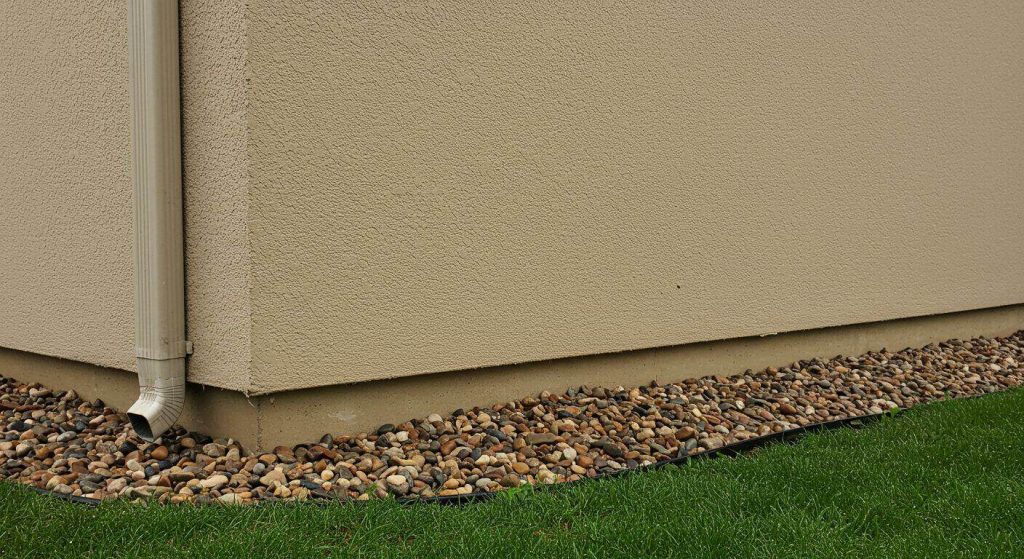
Regular maintenance beats emergency repairs every time. Here’s how to keep your EIFS looking its best year-round.
Monthly Visual Inspections
Make it a habit to walk around your home monthly. Look for:
- New cracks or damage
- Dirt and debris accumulation
- Water stains or moisture marks
- Gaps in caulking around windows and doors
Early detection is key. A small crack fixed today prevents major water infiltration tomorrow. Our EIFS inspection services can help identify issues you might miss. Use our EIFS inspection checklist to stay thorough.
Spot Cleaning Tips
You don’t need to clean the entire house every time. Spot cleaning handles most issues:
- Bird droppings – Clean immediately with soapy water
- Mud splashes – Let dry, then brush off gently
- Algae growth – Treat with diluted bleach solution
- Pollen buildup – Rinse with garden hose
The trick is acting fast. Fresh stains are always easier to remove than old ones. This approach helps prevent EIFS water damage before it starts.
Seasonal Maintenance Checklist
Your EIFS maintenance schedule should follow Indiana’s seasons:
Spring EIFS maintenance:
- Full exterior cleaning after winter
- Check and repair caulking
- Inspect for winter damage
- Clear gutters and downspouts
Summer tasks:
- Monitor for insect activity
- Touch up any faded areas
- Check drainage around foundation
- Trim vegetation away from walls
Fall preparation:
- Remove leaves and debris
- Final cleaning before winter
- Expansion joint maintenance
- Ensure proper water runoff
Winter care:
- Remove snow buildup gently
- Check for ice dam formation
- Monitor for moisture issues
- Plan spring repairs
Indiana EIFS Maintenance Calendar
🌷 SPRING (Mar-May)
- • Full exterior cleaning
- • Inspect winter damage
- • Repair caulking
- • Clear gutters
☀️ SUMMER (Jun-Aug)
- • Check for insect activity
- • Touch up faded areas
- • Trim vegetation
- • Monitor drainage
🍂 FALL (Sep-Nov)
- • Remove leaves/debris
- • Final cleaning
- • Seal any cracks
- • Check water runoff
❄️ WINTER (Dec-Feb)
- • Remove snow gently
- • Check for ice dams
- • Monitor moisture
- • Plan spring repairs
When to Call a Professional
Sometimes DIY isn’t enough. Here’s when to pick up the phone and call in the pros.
Signs You Need Expert Help
Extensive mold or mildew – If it covers more than 10 square feet, you need professional remediation. We use specialized equipment and techniques to eliminate the problem at its source.
Soft or spongy areas – This indicates moisture has penetrated the system. Professional EIFS inspection can determine the extent of damage and proper repair methods.
Cracks wider than 1/8 inch – These aren’t just cosmetic. They’re highways for water infiltration. Professional repair ensures proper sealing and color matching.
Persistent stains – If you’ve tried everything and stains won’t budge, there might be an underlying issue. We have access to commercial-grade cleaners and equipment.
Benefits of Professional Cleaning
Professional stucco cleaning offers advantages:
- Commercial-grade, safe for EIFS products
- Proper equipment and techniques
- EIFS warranty requirements compliance
- Identification of hidden problems
- Time and effort savings
At Indiana Wall Systems, we’ve seen what happens when EIFS maintenance is neglected. A small investment in professional cleaning can prevent major repairs later. Learn more about our comprehensive EIFS repair services. When comparing EIFS cleaning cost Indiana options, remember that quality matters.
What to Expect from Professional Service
When you hire a professional, here’s what should happen:
- Thorough inspection and documentation
- Protection of landscaping and property
- Appropriate cleaning method selection
- Systematic cleaning process
- Post-cleaning inspection
- Maintenance recommendations
A good contractor will also help identify potential issues before they become expensive problems. They’ll ensure all work meets architectural coating systems standards.
Protecting Your EIFS Investment
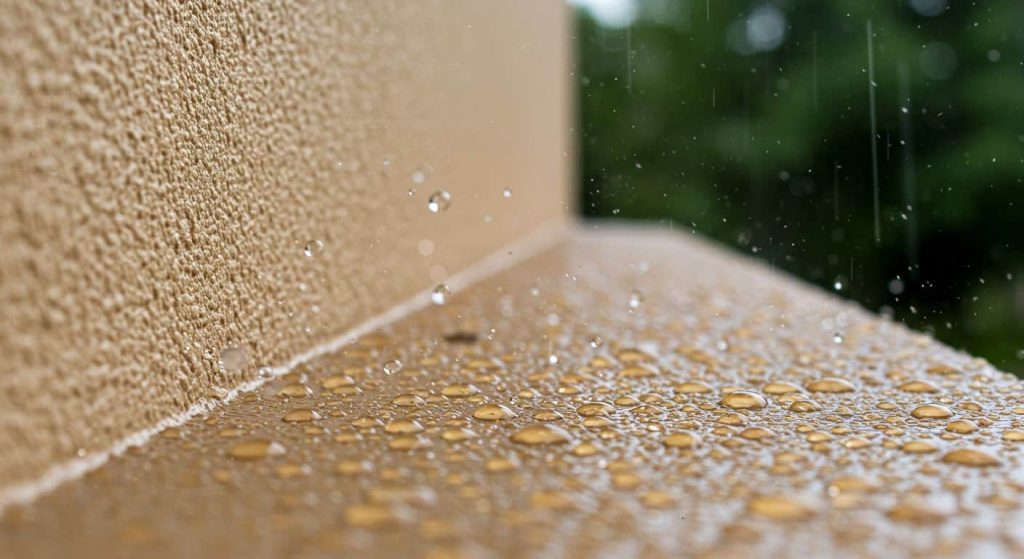
Your EIFS exterior represents a significant investment. Proper cleaning and maintenance protects that investment while keeping your home beautiful.
Long-term Care Strategies
Maintain surface integrity by:
- Keeping vegetation trimmed back
- Ensuring proper drainage away from walls
- Fixing small problems immediately
- Maintaining caulk and sealants
- Following manufacturer guidelines
Consider applying a protective coating every 5-7 years. These coatings help repel water and maintain their appearance longer. This thermal efficiency maintenance approach keeps your energy bills low too.
Cost-Saving Maintenance Tips
Smart maintenance saves money:
- DIY cleaning twice yearly: Saves $400-800
- Early crack repair: Prevents $2,000+ in water damage
- Proper drainage maintenance: Avoids foundation issues
- Regular caulk replacement: Stops moisture infiltration
The math is simple – spend a little now or a lot later. Keep your EIFS in good shape and it’ll serve you well for decades.
Understanding Your Warranty
Most EIFS systems come with warranties, but they require proper maintenance. Document your cleaning and maintenance activities. Take photos before and after cleaning. Keep receipts for any professional services.
This documentation proves you’ve maintained the system properly if warranty claims arise. It also helps when selling your home – buyers love seeing maintenance records that show EIFS warranty requirements have been met.
Regional Considerations for Indiana
Living in Indiana brings unique challenges for EIFS maintenance. Our weather swings from humid summers to freezing winters, each bringing specific concerns.
Weather-Related Challenges
Indiana’s climate affects your EIFS:
- Freeze-thaw cycles can open cracks
- High humidity promotes mold and mildew
- Summer storms bring dirt and debris
- Winter salt spray from roads
Understanding these challenges helps you plan maintenance accordingly. For instance, late spring cleaning removes winter grime while early fall cleaning prepares for cold weather.
Local Environmental Factors
Central Indiana’s environment creates specific cleaning needs:
- Agricultural dust during harvest season
- Pollen from our abundant trees
- Industrial residue in urban areas
- Clay soil splashing during rains
Each requires slightly different cleaning approaches. That’s why local expertise matters – we know what works in Carmel might not work in Columbus.
Best Cleaning Times
Timing matters for EIFS cleaning in Indiana:
- Best months: April-May and September-October
- Ideal temperature: 50-80°F
- Avoid: Freezing temperatures or extreme heat
- Perfect conditions: Overcast days prevent quick drying
Plan your cleaning around Indiana’s weather patterns for best results. Check out our guide on best times for exterior renovations for more seasonal tips.
Advanced EIFS Care Techniques
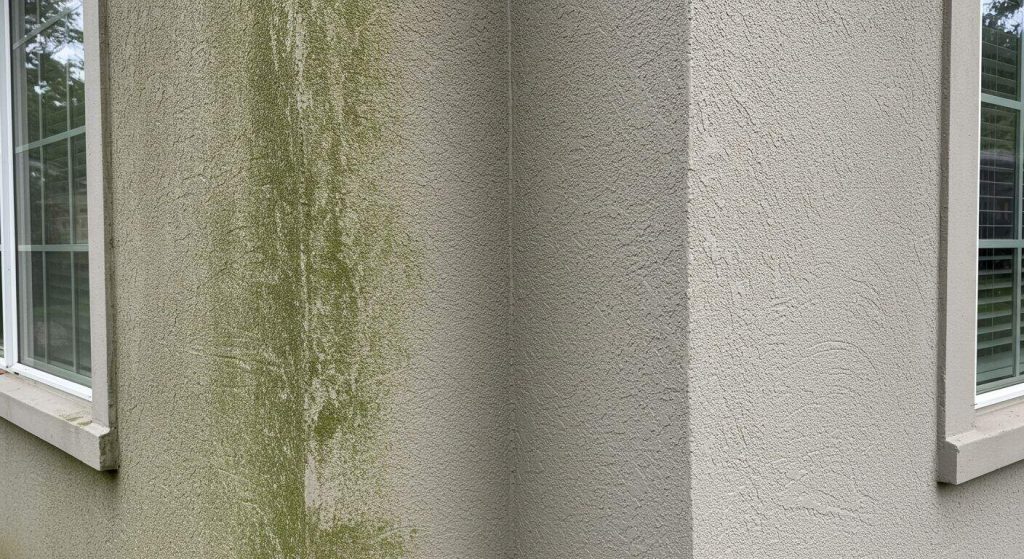
Ready to take your EIFS maintenance to the next level? These advanced techniques keep your exterior performing like new.
Preventive Treatments
Protect your stucco investment with these treatments:
Water-repellent coatings – Applied every 5-7 years, these create an invisible barrier against moisture. They don’t change appearance but significantly improve water resistance.
Anti-microbial treatments – Especially useful for north-facing walls prone to algae growth. These treatments slow biological growth between cleanings.
UV-resistant topcoats – Help prevent surface damage from sun exposure and maintain stucco color longer. Particularly important for south-facing walls. These architectural coating systems extend the life of your acrylic finish restoration.
Addressing Common Problem Areas
EIFS Problem Areas to Watch
🚨 Critical Areas
Check caulking every 6 months
Maintain 6-8″ clearance
Inspect flashing annually
⚠️ Monitor Regularly
Check for water infiltration
Seal around pipes/wires
Prone to cracking
Some areas need extra attention:
Window and door surrounds – These joints see the most movement. Inspect and repair caulking annually. Use high-quality polyurethane sealants designed for EIFS.
Foundation line – Where EIFS meets the ground is vulnerable. Maintain proper clearance (6-8 inches) and ensure good drainage away from walls.
Roof intersections – Flashing must be properly integrated with EIFS. Check these areas carefully during inspections. Proper expansion joint maintenance here prevents costly repairs.
Documentation and Record Keeping
Smart homeowners document everything:
- Keep a maintenance log
- Photograph problem areas
- Save product labels and receipts
- Note weather conditions during cleaning
- Track warranty information
This information proves invaluable for warranty claims, insurance purposes, or when selling your home.
The Bottom Line on EIFS Maintenance
After helping thousands of property owners maintain their EIFS, I can tell you this: consistency beats intensity every time. Regular cleaning and maintenance aren’t just about aesthetics – they’re about protecting your investment.
Your EIFS system can last 50+ years with proper care. But neglect it, and you might face replacement in half that time. The choice is yours.
Remember these key points:
- Use gentle cleaning methods always
- Inspect regularly for early problem detection
- Fix small issues before they grow
- Know when to call professionals
- Document your maintenance efforts
EIFS requires different care than traditional stucco, but it’s not complicated. With the right approach, you’ll keep it looking its best while avoiding costly repairs.
Take Action Today
Don’t wait for problems to appear. Start your EIFS maintenance routine now:
- Do a walk-around inspection this weekend
- Gather your cleaning supplies
- Pick a nice day for cleaning
- Address any issues you find
- Set reminders for regular maintenance
Need help? Indiana Wall Systems offers professional EIFS inspection and cleaning services throughout central Indiana. With our 22 years of experience and commitment to quality, we’ll help extend your EIFS lifespan and protect your investment.
Ready to give your EIFS the care it deserves? Call us at (765) 341-6020 for a free consultation. We’ll assess your specific needs and create a maintenance plan that works for your budget and schedule.
Your home’s exterior is its first line of defense. Let’s make sure it’s ready for whatever Indiana weather throws at it.
Interactive Maintenance Cost Calculator
Here’s a breakdown of typical EIFS maintenance costs compared to repair expenses:
EIFS Maintenance Cost Calculator
| Maintenance Task | DIY Cost | Professional Cost | Frequency | Repair Cost if Neglected |
|---|---|---|---|---|
| Regular Cleaning | $50-100 | $400-800 | 2x yearly | $2,000-5,000 |
| Caulk Inspection | $20-40 | $150-300 | Annually | $5,000-15,000 |
| Minor Crack Repair | $30-60 | $200-500 | As needed | $3,000-8,000 |
| Protective Coating | $200-400 | $1,500-3,000 | Every 5-7 years | $10,000+ |
| Professional Inspection | N/A | $300-600 | Every 2-3 years | $15,000-30,000 |
Annual DIY Investment
$300-600
Annual Professional Cost
$1,200-2,400
Average Major Repair
$10,000-25,000
The math speaks for itself – proper maintenance is always cheaper than repairs!
Total Annual Maintenance Investment: $300-600 (DIY) or $1,200-2,400 (Professional) Average Major Repair Cost: $10,000-25,000
The math speaks for itself – proper maintenance is always cheaper than repairs!
FAQs
How often should I clean my EIFS stucco?
Clean your EIFS twice a year – once in spring and once in fall. This schedule removes winter grime and prepares for cold weather. However, if you live near trees, construction sites, or busy roads, you might need quarterly cleaning. Spot clean immediately after storms or if you notice bird droppings, mud splashes, or algae growth. Regular cleaning prevents dirt buildup that can trap moisture and cause expensive damage.
Can I use a pressure washer on EIFS?
Yes, but with extreme caution. Keep pressure under 300 PSI and maintain at least 24 inches distance from the stucco surface. Better yet, use a garden hose with an adjustable nozzle for most cleaning jobs. High-pressure washing can force water behind the finish, create micro-cracks, and damage the stucco finish permanently. The soft wash method with proper cleaning solution is always safer and just as effective.
What’s the best cleaner for EIFS stucco?
A mild detergent like Dawn dish soap mixed with water (1/4 cup per gallon) works great for regular cleaning. For tougher stains, use specialized EIFS cleaners from manufacturers like Dryvit systems or Sto Corp products. For mold and mildew, dilute bleach 1:10 with water. Always test cleaners in a hidden area first and rinse thoroughly with clean water. Never use muriatic acid or petroleum-based solvents.
How do I know if my EIFS needs professional inspection?
Schedule a professional EIFS inspection if you notice soft or spongy areas, cracks wider than 1/8 inch, persistent discoloration, or water stains. Also inspect after severe storms, if your system is over 10 years old, or before buying/selling a home. Professional inspectors use tools like thermal imaging to detect hidden moisture. Regular inspections are crucial – catching problems early can save thousands in repairs.
What happens if I don’t maintain my EIFS properly?
Neglecting EIFS maintenance leads to serious problems: water infiltration causing rot and mold ($5,000-15,000 repairs), finish degradation requiring full replacement ($10,000-30,000), reduced energy efficiency increasing utility bills, and decreased home value. Small issues like failed caulking or minor cracks quickly become major structural problems. Regular maintenance costs $300-600 annually DIY, while major repairs average $10,000-25,000. The choice is clear – proper cleaning and maintenance protects your investment.
